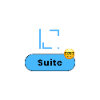Email remains one of the most cost-effective channels for sales prospecting. Well-crafted emails grab attention amid crowded inboxes and drive conversions across the funnel – from generating awareness to nurturing leads and closing deals. This article explores proven strategies to maximize email marketing ROI for sales prospecting.
The Art of the Sales Email
Concise, benefit-focused subject lines that promise tangible value;
Relevance based on prospect needs, challenges, and industry scenario;
Personalized content and messaging using prospect names, company details etc;
Clear call-to-action directing prospects towards the next step;
Impressive facts, client logos and testimonials to build credibility;
Storytelling and conversational tone to forge emotional connections;
Interactive content like calculators, assessments and visuals;
Minimal marketing jargon, catchy buzzwords or exaggerated claims;
Reviewing from the prospect’s perspective and minimizing assumptions;
Steering towards value exchange through demos, content offers etc. rather than hard sell;
Readability on mobile devices since emails are increasingly read on mobile;
Clear opt-out and unsubscribe options.
Essentially, sales emails must capture attention quickly and direct it towards value. Personal relevance, usefulness and storytelling drive engagement.
Crafting Compelling Email Content
Spotlight customer success using specific examples, achievements and results numbers;
Share insights from industry research, interviews and surveys;
Provide tips, how-tos and frameworks simplifying complex topics;
Curate resources like tools, templates, checklists that bring value;
Give sneak peeks into new features, upcoming events or product roadmaps;
Co-create content with customers and thought leaders through interviews;
Convert presentations into a series of bite-sized, easy to digest slides;
Analyze campaign metrics to double down on content that works best;
Balance text, images, infographics, video and audio content;
Test innovative formats like interactive games, quizzes and calculators.
The mantra is “educate, don’t sell.” Valuable content earns goodwill and nurtures prospects for the long-term.
Segmenting Your Email List for Targeted Prospecting
Not every prospect is sales-ready. Sending untargeted, generic emails is ineffective. Analyze list attributes like demographics, interests, past contact and engagement metrics to create relevant segments. Some examples:
Recent website visitors: Hot prospects due to demonstrated interest;
Attendees of a related webinar or event: Good awareness level;
Visitors from targeted companies: Indicates buyer authority;
High website time spent: Suggests strong prospect potential;
Frequent content consumers: Require lighter nurturing to convert;
Referrals: Higher inclination having been referred;
Past subscribers: May need re-engagement after lapsing;
Profile data like title, role, industry etc.: Allows personalization.
Then tailor messaging and offers based on prospect stage and attributes to boost response. For example, send leadership-focused content to executives while addressing pain points directly for bottom-of-funnel leads.
List segmentation is invaluable for targeted, multi-touch nurturing campaigns.
Automating Email Campaigns for Efficiency
Lead scoring models that qualify prospect potential based on engagement;
Workflows triggered by prospect actions like email opens, form fills etc.
Drip campaigns that deliver a series of emails at set intervals;
Dynamic content using merge tags, personalized fields etc.
Lifecycle messaging tuned for prospect stage;
A/B testing email components like subject lines, CTAs etc.
Event-based triggers like cart abandonment, signups etc.
API integrations with other tools like CRM and sales engagement platforms;
Real-time sales alerts and notifications based on prospect interactions.
Automation orchestrates the sequencing, personalization and optimization essential for multi-channel campaigns at scale.
A/B Testing: Refining Your Email Strategy
Subject line variations: Emotional vs informational, personalized vs generic etc.
From name: Sales rep name vs company brand vs personalized combo
Content topics and messaging
Visuals including images, charts, branding etc.
CTAs: Text, placement, color and sizeEmail layouts: Length, sections sequence etc.
Timing: Day and time sent, weekly vs fortnightly etc.
List segmentation: Buyer stage, firmographics, demographics etc.
For reliable results, split test one variable at a time and send to statistically significant samples. Over time, small gains accumulate to lift key metrics like open rates, click through rates and conversions.
Following Up: The Key to Conversion in Sales Prospecting
✅ Track email engagement level and score leads accordingly. Prioritize chasing hot leads.
✅ Set reminders for timely and relevant follow-up based on lead stage and past interactions.
✅ Call or email to answer questions, provide additional content and continue nurturing.
✅ Book demos for qualified leads to advance opportunities.
✅ Offer limited-period special incentives if needed.
✅ Connect on social media for more touchpoints using relevant content and conversations.
✅ Hand off ready leads to sales reps at suitable points for final conversion push.
✅ Use SMS and direct mail for additional touches and varied formats.
✅ Evaluate if inactive leads require re-nurturing and re-engagement.
Consistent, value-adding follow-up is indispensible for lead development. Automate where possible, get personal when required.
Learning from Email Campaign Analytics
Open, clickthrough and unsubscribe rates;
Conversion rates by lead source, segment and campaign wave;
Engagement over multiple emails and follow-ups;
Sales velocity through sales qualified leads;
Cost per lead and customer acquisition;
ROI across product and content types;
Lists, segments and messaging driving most conversions;
Effectiveness across stages – awareness, consideration, conversion;
Performance variance across send days, timing etc.
These actionable data insights help optimize content, targeting, send frequency and follow-up for continually improving performance.
In summary, disciplined execution of targeted, relevant campaigns combined with diligent measurement and optimization drives email success in sales prospecting. With well-crafted messaging and automation powering follow-ups, sales teams can nurture more prospects to convert at lower acquisition costs.
Hey👋 , thank you for reading! Feel free to check more LabiOffice Blog Team articles on business automation, like: The Impact of Mobile Commerce on Sales Strategies!







































